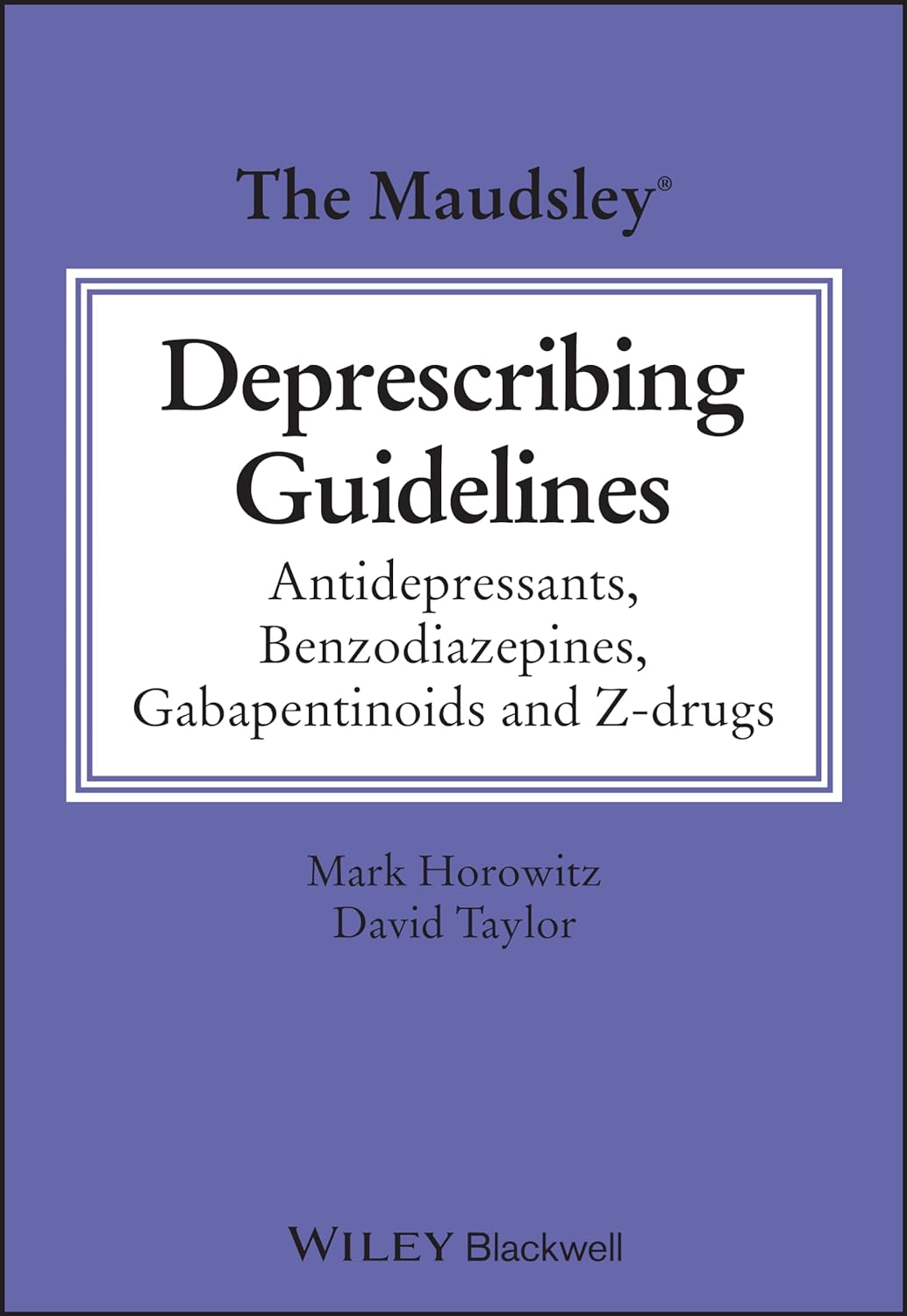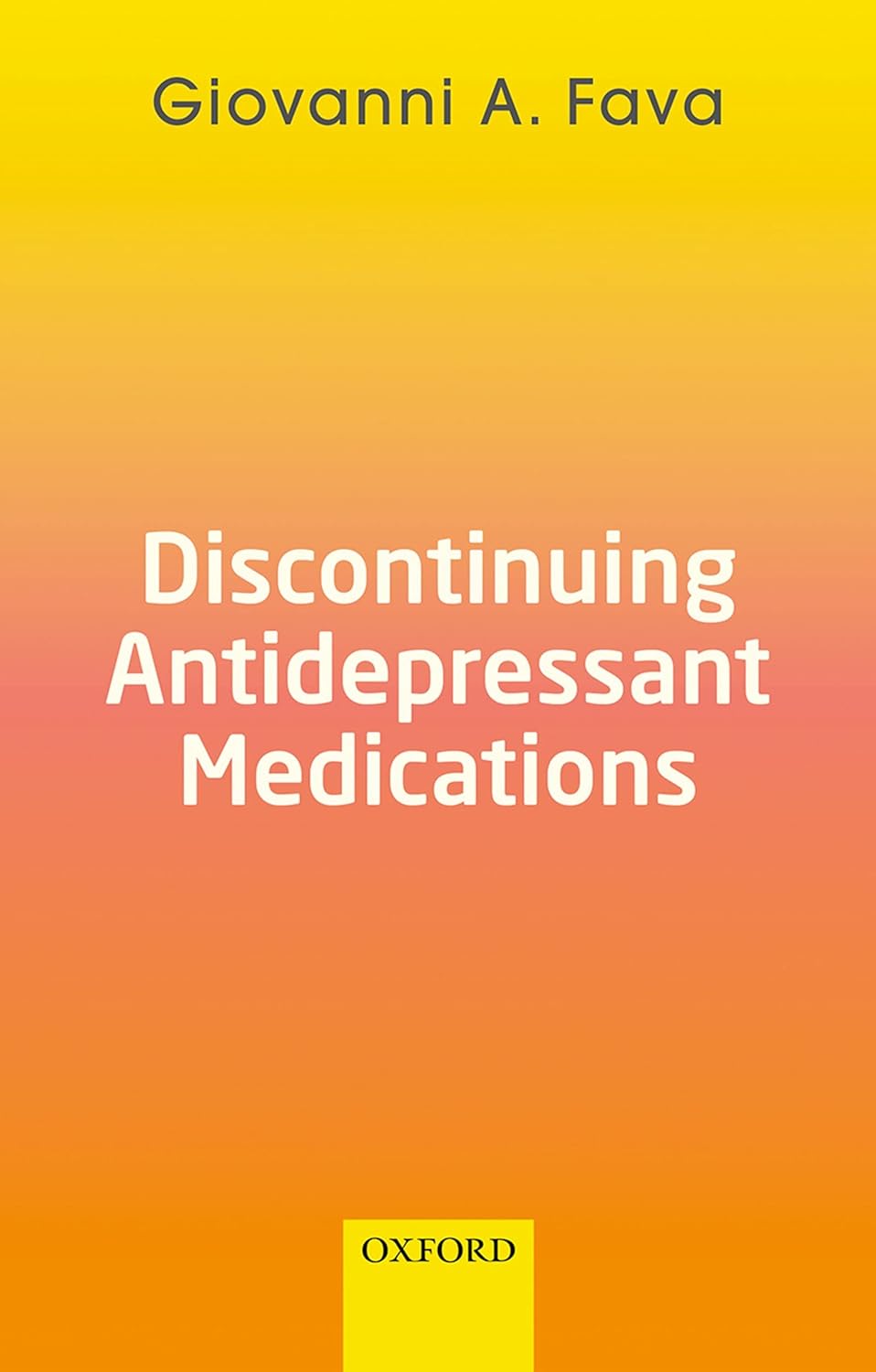- Last edited on August 6, 2024
Antidepressant Withdrawal (Discontinuation) Syndrome
Primer
Antidepressant Withdrawal (Discontinuation) Syndrome is a clinically important phenomenon to monitor for. Different antidepressants will have different discontinuation side effects.[1] Psychiatric symptoms of discontinuation such as anxiety and agitation, crying spells, or irritability are also sometimes misdiagnosed as a depressive relapse.
Epidemiology
- The incidence of antidepressant withdrawal remains not well understood with a wide percentage proposed in the literature.
- A recent 2024 meta-analysis placed the incidence of antidepressant withdrawal to be at around 15% (1 in 6-7 patients), with severe discontinuation symptoms occurring around 1 in 30 patients discontinuing antidepressants.[2]
- Desvenlafaxine, venlafaxine, imipramine, and escitalopram were associated with a higher frequency of discontinuation symptoms
- Imipramine, paroxetine, and desvenlafaxine/venlafaxine were associated with a higher severity of symptoms[3]
- Other commonly used antidepressants had insufficient data to be investigated (e.g., bupropion, amitriptyline, and mirtazapine)
Symptoms
Is it Discontinuation Syndrome or a Relapse?
Antidepressant discontinuation symptoms can be differentiated from a depressive relapse by the time of onset. Discontinuation symptoms typically start 1 to 3 days after the treatment is stopped, whereas relapse symptoms are unlikely to become evident for another 2 to 3 weeks. Discontinuation symptoms are also unlikely to occur in patients who have been on antidepressants for less than 7 weeks. In addition, discontinuation symptoms will also resolve within a couple of days after the antidepressant is restarted. Patients who have a history of antidepressant non-adherence, who have experienced discontinuation symptoms in the past, or who have treatment-emergent anxiety are at highest risk for experiencing discontinuation phenomena.[4] It is also important to note that the time to recurrence for depression is much faster when antidepressants are discontinued rapidly rather than gradually.[5]Mnemonic
The mnemonicFINISH can be used to remember the symptoms of antidepressant discontinuation. Also don't forget that depressive and anxiety symptoms can also be signs of discontinuation syndrome.
F- Flu-like symptomsI- InsomniaN- NauseaI- ImbalanceS- Sensory disturbancesH- Hyperarousal
Medications
- Venlafaxine and paroxetine are the antidepressants that most commonly cause withdrawal symptoms.
- Venlafaxine has a very short half-life, withdrawal symptoms can occur as quick as within missing one dose. The noradrenergic effects of venlafaxine contribute to the withdrawal symptoms and symptoms described as “brain zaps.”
- Paroxetine is very potent and the most anticholinergic SSRI. Thus, when it is discontinued, it can cause cholinergic rebound symptoms which can include agitation, anxiety, insomnia, sialorrhea.
Low Risk Medications
- Generally, fluoxetine and vortioxetine have very long half-lives, which make withdrawal symptoms much less likely.[6]
- Bupropion also has a relatively low rate of withdrawal and the symptoms tend to be mild.
Management
See main article: Tapering/Switching Antidepressants
- Management of these symptoms include reassuring the patient that the symptoms are likely to be short-lived and mild. For acute symptoms, the antidepressant should be restarted with an even slower taper.
- In some circumstances where the discontinuation symptoms are severe, one additional strategy is to substitute the original antidepressant with fluoxetine, which has a long half-life.
- The original antidepressant can be tapered first, and then fluoxetine tapered, to lower the likelihood of discontinuation symptoms.[7]
Hyperbolic Tapering
- More conservative tapering schedules suggest a 10% reduction of the dose by 10% every 1 to 4 weeks.
- For example, the The Horowitz–Taylor method suggests that tapering should be done in a hyperbolic manner to achieve a linear reduction of receptor occupancy to prevent withdrawal.[8]
- This means the dose needs to be reduced by half, then by half of that, and so on.
- The traditional formulations of antidepressants make the later stages of formulating the doses more challenging as a hyperbolic taper involves the use of very low dosages
- The use of oral solutions or tapering strips have been reported to help facilitate tapering in individuals with significant withdrawal symptoms.[9]
Future
Resources
For Patients
Articles
Research
References
1)
Shelton, R. C. (2001). Steps following attainment of remission: discontinuation of antidepressant therapy. Primary care companion to the Journal of clinical psychiatry, 3(4), 168.
2)
Henssler, J., Schmidt, Y., Schmidt, U., Schwarzer, G., Bschor, T., & Baethge, C. (2024). Incidence of antidepressant discontinuation symptoms: a systematic review and meta-analysis. The Lancet Psychiatry.
3)
Henssler, J., Schmidt, Y., Schmidt, U., Schwarzer, G., Bschor, T., & Baethge, C. (2024). Incidence of antidepressant discontinuation symptoms: a systematic review and meta-analysis. The Lancet Psychiatry.
4)
Rosenbaum, J. F., & Zajecka, J. (1997). Clinical management of antidepressant discontinuation. The Journal of clinical psychiatry, 58, 37-40.
5)
Baldessarini, R. J., Tondo, L., Ghiani, C., & Lepri, B. (2010). Illness risk following rapid versus gradual discontinuation of antidepressants. The American journal of psychiatry, 167(8), 934–941.
6)
Kennedy, S. H., Lam, R. W., McIntyre, R. S., Tourjman, S. V., Bhat, V., Blier, P., ... & CANMAT Depression Work Group. (2016). Canadian Network for Mood and Anxiety Treatments (CANMAT) 2016 clinical guidelines for the management of adults with major depressive disorder: section 3. Pharmacological treatments. The Canadian Journal of Psychiatry, 61(9), 540-560.
7)
Rosenbaum, J. F., & Zajecka, J. (1997). Clinical management of antidepressant discontinuation. The Journal of clinical psychiatry, 58, 37-40.
8)
Horowitz, M. A., & Taylor, D. (2019). Tapering of SSRI treatment to mitigate withdrawal symptoms. The Lancet Psychiatry, 6(6), 538-546.
9)
Groot, P. C., & van Os, J. (2021). Successful use of tapering strips for hyperbolic reduction of antidepressant dose: a cohort study. Therapeutic Advances in Psychopharmacology, 11, 20451253211039327.

